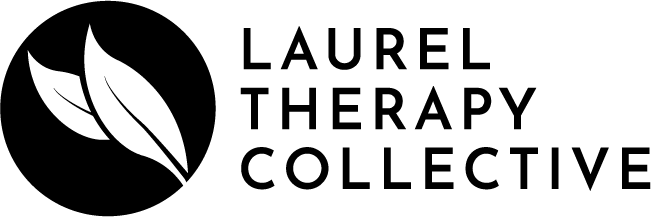A Couples Therapist Reacts to Love Is Blind
Even therapists indulge in reality TV now and then. And for couples therapists, Love Is Blind is basically a case study wrapped in drama, cliffhangers, and cringey proposals.
If you’ve been watching and wondering what a therapist might have to say about it all, here’s your behind-the-scenes look. Our team of Los Angeles-based couples therapists has watched multiple seasons of Love Is Blind—and we’ve developed a knack for predicting which couples will make it past the altar and which ones won’t.
It’s not about being cynical. It’s about understanding the real ingredients of long-term connection. When you watch this show through a therapist’s lens, the patterns become clear.
The Pods as a Crash Course in Building Love Maps
One of the most interesting parts of Love Is Blind is how couples form deep emotional connections without ever seeing each other. While this premise might seem gimmicky, it actually mirrors one of the foundational exercises in Gottman Method couples therapy: building a Love Map.
Love Maps are the mental and emotional blueprints we carry of our partner’s inner world. They include things like:
Your partner’s hopes, dreams, and fears
What stresses them out at work
How they feel about their family
What they value most in a relationship
Their favorite ways to feel loved and supported
In the pods, couples spend hours asking each other questions and listening with full attention, without the distractions of physical chemistry, social media, or daily routines. This intense, focused time is ideal for creating detailed Love Maps. It’s a concentrated version of what many couples experience in the early stages of dating in the real world.
But here’s the catch: it only works if the questions are deep, honest, and emotionally curious. The most successful Love Is Blind couples don’t just talk about favorite colors or surface-level hobbies. They dive into value systems, future goals, childhood wounds, and relationship expectations.
Love Maps aren’t a one time exercise. In Gottman Method couples therapy, we guide couples in continually updating their Love Maps—because people grow and change, and staying emotionally connected means staying curious about your partner over time.
So when you’re watching a couple in the pods ask thoughtful, emotionally intelligent questions and really listen to the answers, you’re witnessing a Love Map in the making.
The Real Markers of Long-Term Compatibility
The strongest couples on Love Is Blind tend to share a few foundational traits. These aren't just nice-to-haves. They’re core elements of what makes a relationship work.
1. Complementary Attachment Styles
Attachment style is one of the biggest predictors of how someone shows up in a relationship. Secure attachment is ideal, but you can absolutely have a satisfying relationship with mixed attachment styles. When one partner is anxiously attached and the other is securely attached, the relationship has a good chance of finding balance. But when one or both partners are avoidant or anxious, conflict and emotional disconnection often become the norm. But that isn’t to say it can’t work.
2. Complementary Conflict Styles
Conflict isn’t the problem. How couples handle it is. The healthiest couples on the show tend to stay calm, take responsibility, and repair quickly after a disagreement. Couples who escalate or shut down in conflict without resolving anything tend to fall apart under pressure.
We also know that sometimes couples who fight a lot do stay together. What doesn't work is when one partner hates conflict and the other finds it invigorating; those partnerships rarely work.
3. A “Team Us” Mentality
Successful couples act like a team. They face external stressors together, rather than turning on each other. When conflict or insecurity arises, they focus on solving the problem, not attacking the other person. The couples who make it work usually speak in terms of “we” instead of “me vs. you.” The show purposely puts couples in situations that test their ability to handle this, like reintroducing exes from the pods. It makes for good drama!
4. Shared Values Around Money, Intimacy, and Family
Compatibility doesn’t mean agreeing on everything, but it does mean having conversations early and often about big-picture issues. Couples who are aligned, or at least respectful of each other’s positions, when it comes to money, physical connection, and family dynamics tend to build stronger, more resilient bonds. In recent seasons of Love Is Blind, at least one person brings up a prenup as a way of the show handling the money conversation.
5. Shared Belief Systems—or Respect for Differences
Whether rooted in religion, spirituality, or personal ethics, having a shared foundation can give couples a sense of direction. When belief systems differ, mutual respect is essential. Tension around deeply held values can become a source of division if not handled thoughtfully.
6. Assuming Positive Intent
When disagreements happen, it matters whether a partner assumes the best or the worst. Couples who give each other the benefit of the doubt are far more likely to resolve issues with empathy and grace. Without this mindset, misunderstandings often spiral into unnecessary conflict.
7. Family Support or Strong Boundaries
Families play a much bigger role in couple stability than most people realize. Whether it’s gaining the blessing of parents or learning how to navigate toxic dynamics, couples do best when they’re either supported by their families or have a clear plan for protecting their relationship from outside stress. You can read more about navigating difficult in-law relationships here.
How the Gottman Method Addresses Issues on Love Is Blind
Many of the issues that show up on Love Is Blind are things we regularly help clients work through in session. Here’s how Gottman Method couples therapy addresses the same factors we’ve observed on the show:
Attachment and Conflict Styles: We assess each partner’s attachment history and conflict behavior, helping them understand and adjust their patterns.
Communication and Repair: We teach concrete tools for managing conflict, building emotional attunement, and repairing after a rupture.
Shared Meaning and Rituals: We help couples create shared values, develop rituals of connection, and align around future goals.
Respecting Differences: Instead of aiming for total agreement, we guide couples in navigating perpetual problems with mutual respect and compassion.
Strengthening the Couple’s Bond: We support couples in becoming each other’s safe haven and strongest advocate, even when things get hard.
Understanding Attachment Styles in Relationships
One of the most powerful predictors of how someone behaves in a relationship is their attachment style. This concept refers to the way we form emotional bonds and respond to intimacy and closeness. On Love Is Blind, attachment styles are on full display, even when the cast doesn’t realize it.
We're not gonna name names, but you can probably think of some Love Is Blind participants who fall into these categories. There are four main attachment styles:
Secure Attachment: Comfortable with intimacy, able to trust others, and able to express needs clearly. This type rarely sees other people as a threat.
Anxious Attachment: Craves closeness but often fears abandonment, may come across as clingy, overly accommodating, or reactive during conflict. This style needs a lot of reassurance and is reactive to the perceived threat of other contestants.
Avoidant Attachment: Values independence, may feel overwhelmed by emotional closeness, and often withdraws or shuts down when things get intense.
Fearful-Avoidant (Disorganized): A mix of anxious and avoidant tendencies—wants closeness but also fears it, often due to unresolved trauma or inconsistent caregiving in early life.
In real life—and on the show—securely attached individuals tend to create the most stable relationships, especially when paired with another secure partner. But it’s also common to see pairings where one partner is anxious and the other is avoidant. This is often a difficult dynamic, as the anxious partner seeks more connection while the avoidant partner feels smothered and pulls away. These push-pull dynamics can create intense emotional highs and lows, which make for gripping television but difficult long-term real-world compatibility.
On Love Is Blind, you might notice patterns like:
One partner constantly asking for reassurance or clarity about where the relationship stands
Another avoiding hard conversations or shutting down when conflict arises
Explosive arguments triggered by small misunderstandings, often driven by deeper fears of abandonment or engulfment
In couples therapy, we help partners identify their attachment styles and understand how these patterns influence their behavior in the relationship. Once they become aware of these unconscious drivers, they can begin to:
Ask for reassurance in healthier ways
Offer emotional availability without feeling engulfed
Set boundaries without withdrawing
Build a stronger emotional connection that meets both partners’ needs
When couples understand their attachment styles and learn to co-regulate they’re better able to handle challenges, de-escalate conflict, and create a relationship built on trust rather than fear.
So, the next time you're watching a Love Is Blind couple spiral into an argument over “what tone meant what,” you might just be witnessing an anxious-avoidant dynamic in action.
The Bottom Line on Love Is Blind
Reality shows like Love Is Blind might amplify drama for entertainment, but the dynamics they reveal are real. Whether you're falling in love in a pod or trying to deepen an established relationship, the ingredients for a healthy, lasting partnership remain the same.
If watching Love Is Blind has you reflecting on your own relationship, therapy can be a great space to explore compatibility, improve communication, and strengthen your bond.
Couples Therapy In Los Angeles, San Francisco & Beyond
Book a free consultation with one of our Gottman-trained therapists and take the first step toward deeper connection.

























